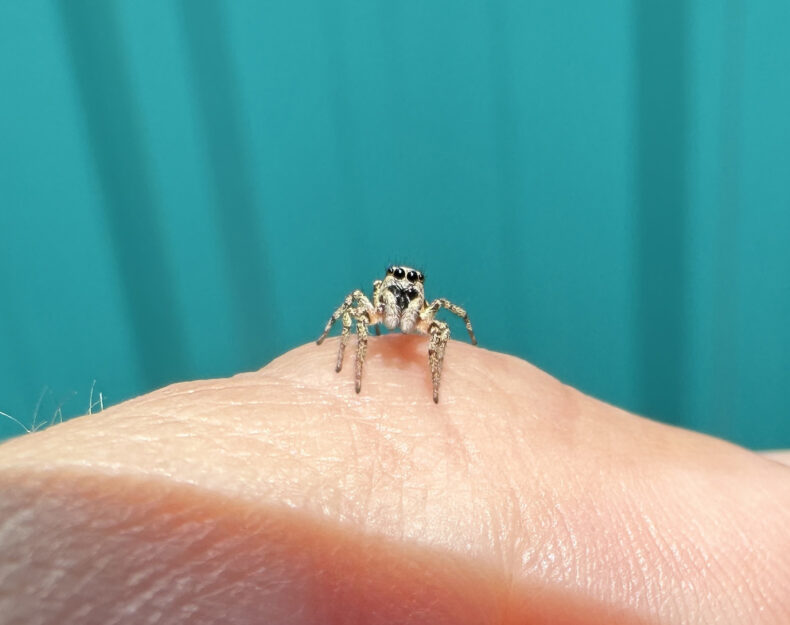
If you ever have the opportunity, I highly recommend making a tiny friend.
How tiny, you ask? I think it helps if your friend is big enough to be visible to you (though this isn’t strictly necessary) but small enough to be outside of the category of beings you would normally consider friend material.
The act of befriending someone small and unlikely can change the way you think, about friendship and about who is worth knowing and caring for. It may change your perspective on who matters. And it could offer a respite from the complications of being a human.
If you’d like to give it a try, here are some potential tiny friends to consider: spiders, snails, and bees.
Spiders
Those who know me will probably not be surprised that I recently befriended a jumping spider.* She appeared in my house one day in March, tucked into the upper corner of a window frame near the front door. Soon she was exploring the seam where the wall meets the ceiling (if you want to find a jumping spider, or any spider, in your house, this is a good place to look).
Some jumping spiders do fine indoors, assuming there are flies to prey on, but they are often thirsty. So I stood on our entryway bench on tiptoes to offer this spider a drink from a wet Q-tip. She backed away, but then inched toward the offering, pedipalps waving madly. Once she realized there was water, she latched on and drank for a good 10 seconds.
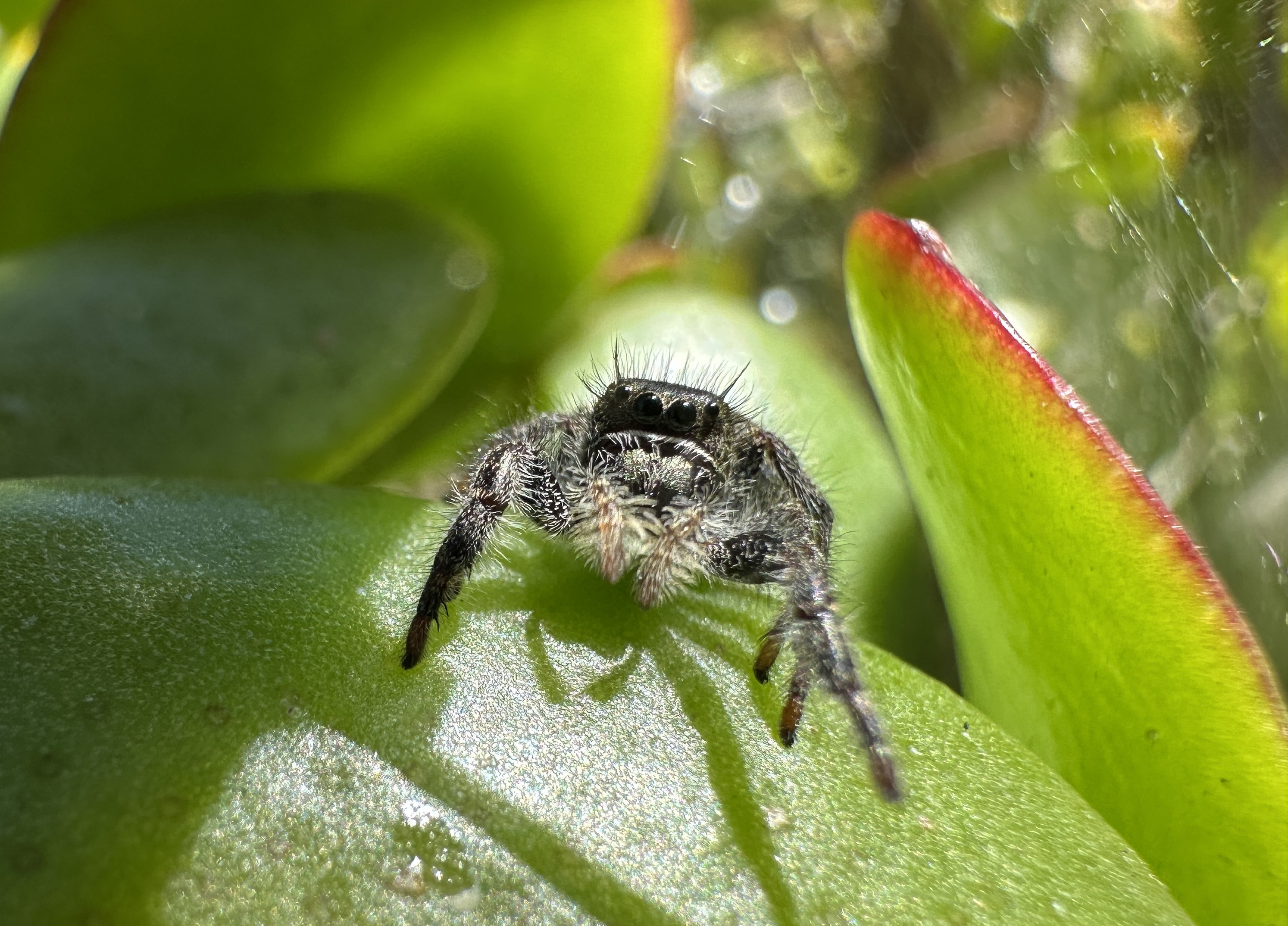
We were in a relatively cold and rainy spell, so instead of moving her outside, I coaxed her into a little terrarium to wait for a warm day when she’d have an easier time finding a meal and a safe place to build a sleeping nest. In the meantime, she looked hungry (according to this handy diagram of dubious origin I found on the jumping spider subreddit).
I went out and caught a green bottle fly (surprisingly easy to do when they are sunning on a flower) and put it in her enclosure. She started tracking it immediately and wasted no time flinging herself at the fly. Her first pounce was off the mark, but before long she caught herself a meal. I brought her more flies over the next few days, and she got a little fatter and a little less fearful of me.
Like Diego, who I wrote about previously, she was easy to identify as a Phidippus johnsoni spider, and I named her Lady P. Though I really liked having her around, I wasn’t a fan of ushering flies to their deaths. As soon as the weather improved, I set her free on Diego’s jade bush in my front yard. I like to think they found each other, and I’ll get to know some of their offspring one day.
Caring for someone so small and different, getting to know this tiny being and sharing a few days of her life, felt special. It released my attention from the many things in a day that feel pressing and overwhelming to humans like me and refocused it on her needs, habits, and quirks. I got to admire her hunting abilities, and watch her grow plump and sleep in the nest she built at the top of her enclosure. I don’t know how she felt about the whole situation, but I feel pretty confident that I improved her chances of thriving out in the world. And I felt grateful for the quiet moments and perspective I gained.
*I was going to note that not all of my posts will include jumping spiders, but then I realized I can’t promise that.
Snails
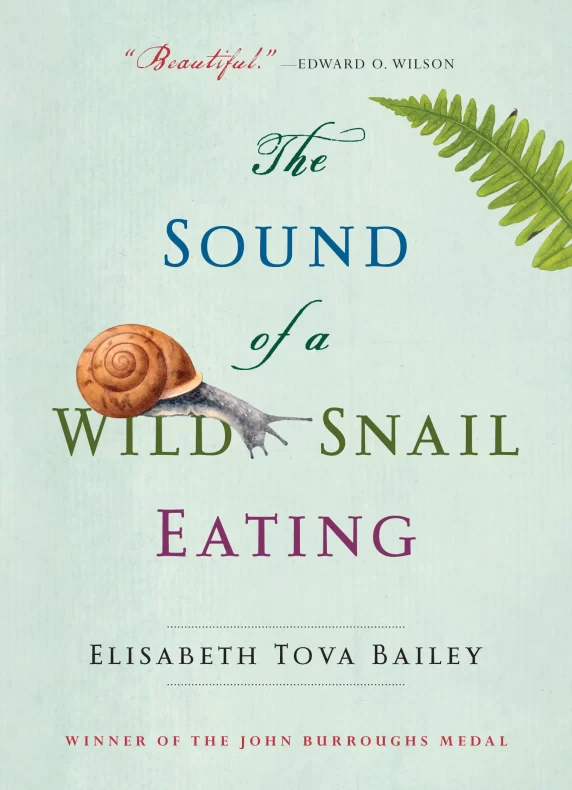
I recently read about another tiny friend in The Sound of a Wild Snail Eating, by Elisabeth Tova Bailey. The book tells the story of Bailey’s devastating illness that results in her being isolated and bed-bound, and her friendship with a little woodland snail who arrived at her bedside in a pot of violets brought by a visitor.
This tiny creature gave her someone else to focus on during the year they spent together. She learned the snail’s habits, needs, and preferences, and what it sounds like when a snail munches on a flower petal. The little snail became a companion, and Elisabeth felt less alone. In return, she arranged for a large terrarium with fresh forest mosses and ferns, scraps of wood, a mussel shell filed with water, and slices of portobello mushrooms, which her snail was very fond of.
Wanting to know more about the snail, Elisabeth borrowed the twelve-volume scientific tome written in the 1980s, The Mollusca, from the library. She came to admire many things about snails, especially the slime, which is used in different formulations as protection from drying out, a surface on which to glide, adhesive for climbing, and even medication for self-healing. As she watched the snail explore the new surroundings, she thought about her snail’s eyes (at the tips of telescoping tentacles), teeth (they have thousands), and shell (a logarithmic spiral).
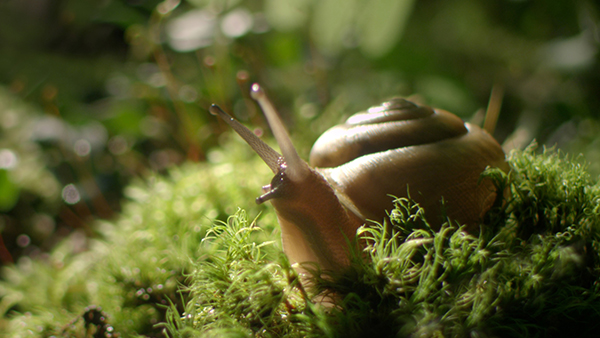
And she wondered about the snail’s thoughts:
“My snail went about its life, moment to moment, much as I did, making decisions—or being indecisive—about food and shelter and sleep. If a snail can learn and remember, then it thinks, at least on some level; I was convinced of this. And until someone (preferably a snail) can prove otherwise, I will hold on to this belief. The life of a snail is as full of tasty food, comfortable beds of sorts, and a mix of pleasant and not-so-pleasant adventures as that of anyone I know.”
From a chapter on behavior in The Mollusca, she found that scientists have wondered as well: “as investigators themselves learn to ‘think like a snail’ . . . ever more amazing feats of learning power are revealed.” This act of taking the perspective of someone so small and so unlike oneself requires effort and time spent with your tiny friend, but the reward is a new way of imagining the world, and hopefully, a feeling of kinship.
For Elizabeth, it meant even more:
“The snail had been the best of companions . . . I had watched it adapt to changed circumstances and persevere. Naturally solitary and slow paced, it had entertained and taught me, and was beautiful to watch as it glided silently along, leading me through a dark time into a world beyond that of my own species. The snail had been a mentor; its tiny existence had sustained me.”
Bees
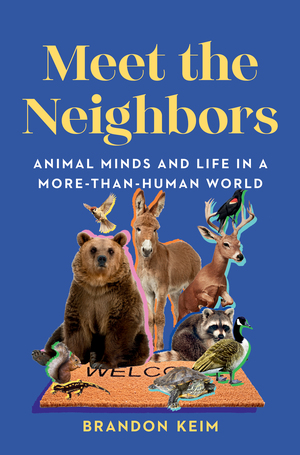
My dear friend and colleague Brandon Keim opens his wonderful book, Meet the Neighbors: Animal minds and life in a more-than-human world, with a lovely story of a tiny friend. A woman named Fiona Presley was working in her garden in a village in Scotland when she discovered a bumblebee in the grass. Looking closer she could see the bee was a queen, and that for some reason she had no wings. (You may be among the 749k people who have watched this video about the friendship, but I learned about it from Brandon).
Fiona placed her warm hand in front of the bee, who accepted the invitation and crawled in. It was a cold day in April, so she took the hapless bee into her home, gave her some sugar water, and the two set about getting to know each other. Fiona named her new friend Bee.
On sunny days, Fiona would take Bee outside, and when the weather warmed in May, she made her a nest box in the garden. Bee lived outside, and Fiona would visit — a little knock on the nest box would bring the little bumblebee out to say hello. “Cross my heart, I would say that Bee was always pleased to see me,” she told Brandon. “She wasn’t looking for anything to eat or drink. She would just come and snuggle in my hand. It’s almost as if the company meant as much to her as it did to me.”
Their friendship lasted for months. Fiona would talk to her tiny friend, and sometimes Bee would sleep in Fiona’s hand as she read a book. “I think she definitely, to me, thrived being with another living being,” she says on the video. The end of the summer marked the end of the bumblebee’s lifecycle. Bee died peacefully in Fiona’s hand. “Of course I was sad, but I was immensely proud that I had been able to give her a comfortable life.”
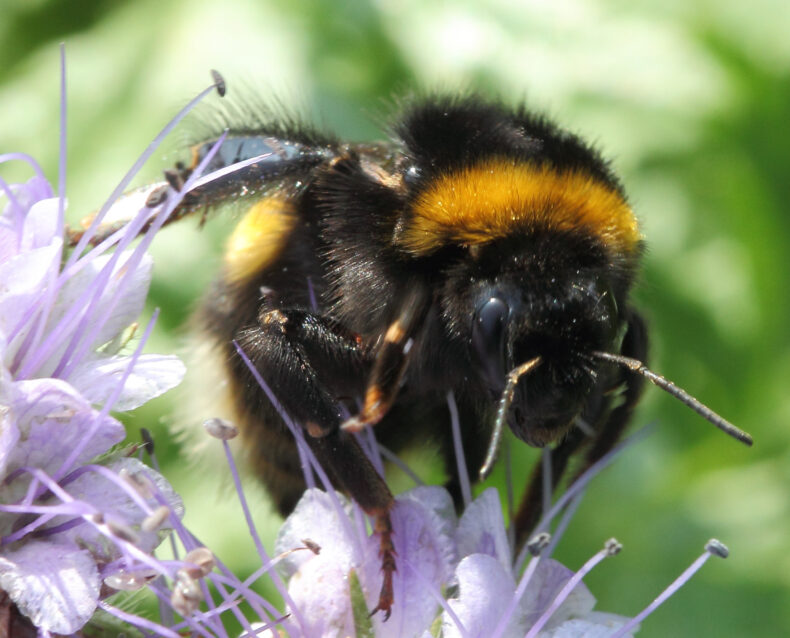
Brandon sees stories like these as meaningful, particularly at a time when things can feel quite dark:
“The world’s problems are so vast and painful as to be paralyzing; narratives of connection are sparks of hope, of unvanquished possibility. These stories are also rooted in empathy: in a sense of other animals as thinking, feeling beings with whom, despite all our differences, we have much in common.”
I think there’s something about how tiny and how different from us a bee is that made this unlikely relationship so special. “Bee might only have been a bee,” Brandon writes,” but she was a friend.”
I’ve found while hiking in the desert that flys are thirsty. Rather than brushing them away, I’ve placed drops of water on my hand as an offering. It is most satisfying to watch them quench their thirst.
That is so lovely! I will definitely try it.